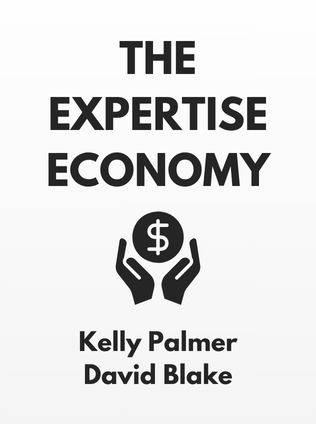
The Expertise Economy
How the Smartest Companies Use Learning to Engage, Compete and Succeed
By Kelly Palmer, David Blake
Published 09/2018
About the Author
Kelly Palmer is a renowned thought leader in learning, business, and career development. She is currently on the executive team at Degreed, a leading platform for lifelong learning and skill development. Prior to Degreed, Palmer served as the Chief Learning Officer at LinkedIn, where she significantly contributed to the company's learning culture. David Blake, the co-author, has dedicated his career to innovating higher education and lifelong learning. He is the co-founder and executive chairman of Degreed, sharing Palmer's vision of transforming learning and skill acquisition in the modern workplace.
Main Idea
"The Expertise Economy: How the Smartest Companies Use Learning to Engage, Compete, and Succeed" by Kelly Palmer and David Blake delves into the critical transition the workplace is undergoing due to digitization, automation, and rapid technological advancements. The book argues that traditional methods of training and skill acquisition are no longer sufficient. Instead, companies must foster a culture of continuous learning and adaptability to stay competitive. Palmer and Blake provide insights and practical strategies for organizations to embrace this new paradigm and turn learning into a major competitive advantage.
Table of Contents
- Introduction
- How We Really Learn
- Getting Practical About Learning
- Make Learning a Competitive Advantage
- Embrace Personalized Learning
- Combat Content Overload
- Understand the Power of Peers
- Succeed with the Right Technology
- Analyze Skills with Data and Insights
- Make Expertise Count
Introduction
The world of work is experiencing a significant transition, much like the shift from the agricultural economy to the Industrial Revolution. We are now in the age of digitization, automation, and acceleration, where critical skills and expertise are imperative for success. A 2018 McKinsey Global Institute report highlighted that 62% of executives believe they will need to retrain or replace more than a quarter of their workforce by 2023 due to advancing automation and digitization. CEOs and business leaders must rethink their strategies, focusing on reskilling and upskilling the workforce rather than solely relying on hiring new talent.
The vital skill set for the future includes learning agility, collaboration, perseverance, curiosity, and the ability to question the world around us. Companies need to create an environment where employees continuously learn new skills, integrating learning into their daily work rather than treating it as a separate activity. Learning is complex and requires both support and the right environment for employees to take ownership of their learning journey.
How We Really Learn
Understanding how people truly learn is crucial for fostering a learning culture. Researcher Bror Saxberg emphasizes that learning begins with caring. To make people care, it is essential to understand their unique mix of cognitive capabilities and motivations. Malcolm Knowles, an adult educator, discovered that adults are primarily motivated by intrinsic factors and need to know the reason behind their learning.
"In his book Drive: The Surprising Truth About What Motivates Us, Daniel H. Pink discusses human motivation in terms of autonomy, mastery, and purpose. Autonomy is our desire to be self-directed; mastery is our urge to make progress and get better at what we do; and purpose is our yearning to contribute and be part of something larger than ourselves." - Daniel H. Pink
Despite this knowledge, many companies employ learning and talent strategies that are contrary to these principles. Instead of promoting autonomy, they use a command-and-control model. Instead of fostering mastery, they are content with employees merely completing training without truly developing new skills.
Getting Practical About Learning
To help employees genuinely learn, it is important to adopt a practical approach. The "Learning Loop" is a simple yet effective model consisting of four components: knowledge, practice, feedback, and reflection. For example, when a new employee starts a job, they begin by acquiring knowledge about their role. They then practice their tasks, receive feedback, and reflect on their progress.
Sign up for FREE and get access to 1,400+ books summaries.
You May Also Like
The Subtle Art of Not Giving a F*ck
A Counterintuitive Approach to Living a Good Life
By Mark MansonRich Dad Poor Dad
What the Rich Teach Their Kids About Money - That the Poor and Middle Class Do Not!
By Robert T. KiyosakiHow To Win Friends and Influence People
The All-Time Classic Manual Of People Skills
By Dale CarnegieQuiet: The Power of Introverts
The Power of Introverts in a World That Can't Stop Talking
By Susan Cain



















